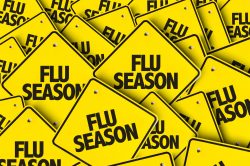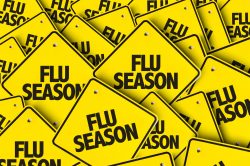In my last column, I tried to explain the complicated math involved in calculating the potential financial impact of MACRA/MIPS on urgent care centers. I made the case for a significant return on investment for a typical urgent care with a typical mix of Medicare patients. Of course, all of the potential return depends on implementation of practical and efficient quality improvement programs that meet the measurement and reporting expectations outlined by the Centers for …
Don’t Forget Your Flu Vaccine Information Statements

This should be prime time for recommending flu shots to patients, ideally offering to give one on the spot if medically appropriate for the patient’s condition at the time of service. The Centers for Disease Control and Prevention recommends everyone 6 months of age or older receive an influenza vaccine every year, preferably by the end of October. Just as important from an administrative (and legal) perspective is remembering to provide an official Vaccine Information …
Be Mindful of Dates of Service When Coding for Flu Shots—or Get Claims Denied

Among the Centers for Medicare and Medicaid Services’ new codes is one that’s likely to be confusing as patients start coming in for flu shots. A quadrivalent vaccine made and distributed by Sequirus is available for reporting, but if billing staff use the corresponding code, 90756 (Influenza virus vaccine, quadrivalent [ccIIV4], derived from cell cultures, subunit, antibiotic free, 0.5mL dosage, for intramuscular use) before January 1, 2018, the claim will be denied. Instead, they’re advised …
Plague in the House—Could You Identify the Patient?

Urgent message: While common perceptions are that the plague—the infamous microorganism that claimed the lives of countless millions in ancient times—has been eradicated in modern society, infections still occur, even in the United States. While the odds of encountering a patient infected with the plague are thin, its presentation of flu-like symptoms—which could easily lead a patient to urgent care—make it a diagnosis urgent care providers should be aware of. Introduction Yersinia pestis—known commonly as …
Last Season’s Flu Vaccine Gets a C+ Overall, But Failed in Protecting Older Patients

The 2016–2017 flu season is far enough behind us that health system numbers crunchers can assess how well the vaccine performed—and it’s definitely a mixed bag. While it was a good match for the predominant strain (Type A H3N2) and was around 42% effective in preventing illness severe enough to send patients to the doctor’s office, the Centers for Disease Control and Prevention admits that it was essentially ineffective in protecting people age 65 and …
Improving Appropriate Antibiotic Use for Common Clinical Conditions in Urgent Care

Urgent message: Increasingly, patients with symptoms of acute infection run to their nearest urgent care center. As such, urgent care clinicians can contribute greatly to national efforts to save lives by stemming the growth of antibiotic resistance through good antibiotic stewardship. Introduction Despite being a recent healthcare phenomenon, urgent care centers are responsible for a growing percentage of outpatient healthcare, with an estimated 160 million total annual visits at more than 9,300 sites in the …
Beware Deceptively ‘Simple’ Diagnoses

A pair of recent news stores add up to a cautionary tale for clinicians inclined to assume ailments commonly identified in the urgent care setting pose no serious threats. One case resulted in the partial amputation of a child’s leg, while the other cost a child her life. In Akron, OH a 6-year-old girl’s strep throat was followed by a flu diagnosis. When her left leg began to swell and she begged her parents not …
A Multimodal Intervention to Reduce Antibiotic Use for Common Upper Respiratory Infections in the Urgent Care Setting

Urgent message: Upper respiratory infections (URIs) are the most common presenting complaint in urgent care. Regardless of etiology or provider specialty, antibiotics are prescribed 60% of the time for the treatment of URIs, contributing to drug-resistant respiratory organisms. Employing a multimodal intervention, the authors we were able to appreciate a modest, statistically significant decrease in the rate of antibiotic prescribing among urgent care providers. Introduction Antimicrobial resistance is arguably one of the greatest risks to …
CDC: New Data Show Flu Shots Save Children’s Lives

Children whose parents ensure they get flu shots stand a significantly lower risk for death from influenza than children who are not vaccinated, according to new data from the Centers for Disease Control and Prevention. In fact, the CDC says between 2010 and 2014 flu vaccinations reduced the risk of flu-associated death by half among children with underlying high-risk medical conditions, and by nearly two-thirds among healthy children. The study, published in Pediatrics, is thought …
Video Care—the Next Best Thing to Being There?

While there’s no way to apply stitches, start an IV, or cast a patient remotely, virtual visits may be just fine for many complaints that drive people to urgent care. A new study published in the Journal of Medical Internet Research shows that outcomes—defined as the need for follow-up visits for the same complaint—for some common diagnoses were no different between patients seen in person or via video hookup. In fact, that standard was met …
